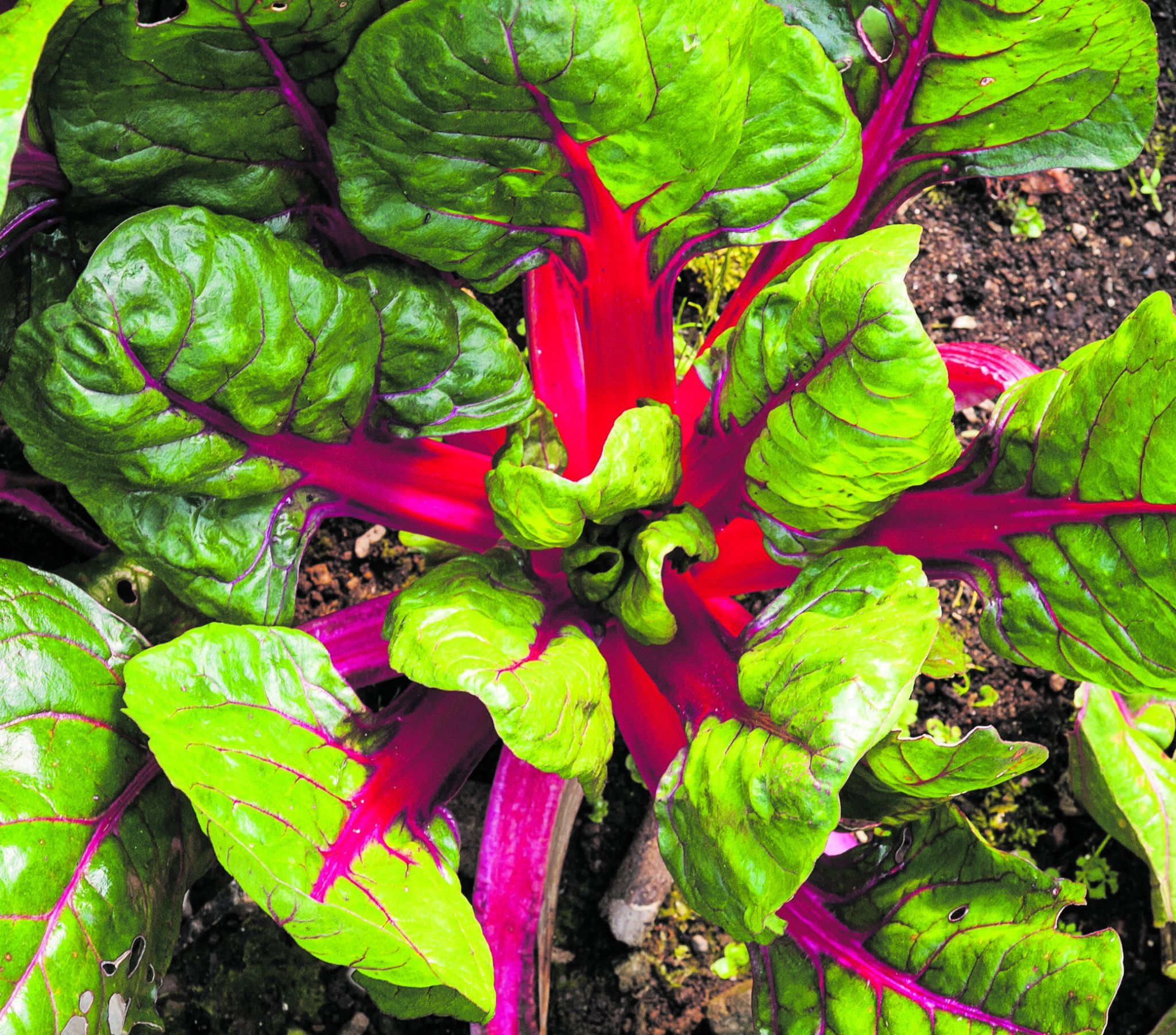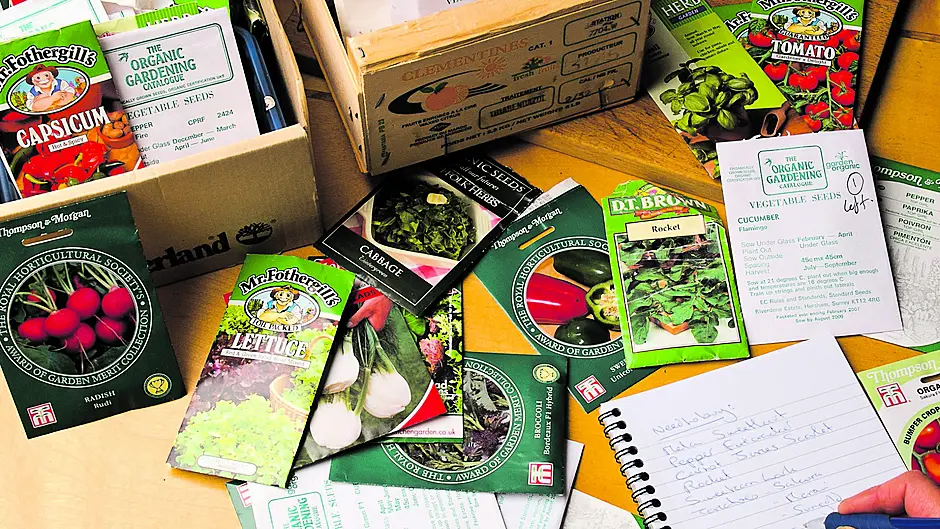By Joyce Russell
WINTER vegetables are certainly being put to the test. Sub-zero temperatures and cold bright days seem to have been replaced by more rain onto ground that was already wet. It may well be cold again by the time you read this – swift changes in the weather are always a feature of our winters.
The really hardy brassicas will cope well. Broccoli and kales have survived to -12C in my garden in the coldest winter. They may drop a few larger leaves and smaller leaves may brown or wilt a little, but the tips are ready to start growing when conditions are warm enough.
If you grow winter brassicas in a polytunnel or greenhouse, check for grey mould and remove affected leaves. This becomes more of a problem after several years of growing in the same enclosed space. I try to leave some ventilation moving through the structure and only close everything up when it is too cold or windy.
Chard and spinach
The ruby chard, from a July sowing in a polytunnel, has done very well this year. There are long straight stems and big leaves that make for plenty of tasty cooking opportunities. Cold weather helps to slow chard plants from bolting and, with a bit of care, there should be plenty to harvest right through until late spring. Remember to pick as needed – don’t strip out too many stems from each plant so they have the energy to grow new ones.
 Ruby chard is a prolific and delicious winter vegetable.
Ruby chard is a prolific and delicious winter vegetable.True spinach grows slowly through the winter but it will get going next spring. Perpetual spinach crops well for many months, or even a year, and it produces large crops if grown under cover. Try sowing some in March and use it much as you would use chard.
Look through seed packets
If you want a nice easy job that can be done indoors, then this is a good one. Get out all your seed packets from previous years and check through the ‘sow by’ dates to find the ones that are past their best. I usually make three piles:
• One is of packets that should be thrown out.
• One is of packets that should definitely be kept.
• The third is an in-between pile where the use by date has just passed, or will do so soon.
This last pile is for use if I end up in a fix where I haven’t replaced the seeds with new packets. Maybe the variety is a treasured one that I can no longer get, or maybe it’s a type of salad leaf, or brassica, where I know from experience that the date can usually be stretched.
It’s not worth risking old seed if the type takes a long time to germinate (carrots and parsnips fall into this group). You can waste several weeks before knowing seed has failed.
If the sealed packet of seed is unopened the contents will germinate better than those that have been sitting in an opened packet for more than a year. Brassicas can be used if open for two or three years. Peas and beans should be replaced each year.
Once you have your piles, then make a list of all the new seeds that you would like to get. You may not go looking for them until the new year, but at least you are ready for an early start and have the best chance of getting the varieties you want before they sell out.
Christmas plants
The shops are full of bright red poinsettias, bursting hyacinths, early daffodils in pots and exotic orchids supported by canes. Christmas cacti are breaking their buds and citrus trees are showing off flowers and fruits. All of these are tempting as Christmas gifts, but remember that not everyone has green fingers and it may be wise to print out a list of instructions to go along with any plant
present.
 A small orange tree with fruit and flowers.
A small orange tree with fruit and flowers.Some plants need a warm spot and others a cooler one. Some things like plenty of water and others will collapse if the compost is more than damp. A little bit of research will help plant-gifts to perform to their best. Some Christmas options may not last beyond the one season, but they should give pleasure for several weeks before they are done.
Beastly basil!
We all love fresh basil and the easiest thing is to buy a plant from the supermarket. Just make sure that you take a close look before bringing it home. I introduced a nice lot of greenfly on a bought basil plant. Fortunately they only seem to have moved to the cyclamen next to them and a quick rinse under the tap washed them away before they became established.
I’m not saying to stop buying basil, but it is worth frisking each plant before you bring it into the kitchen.









